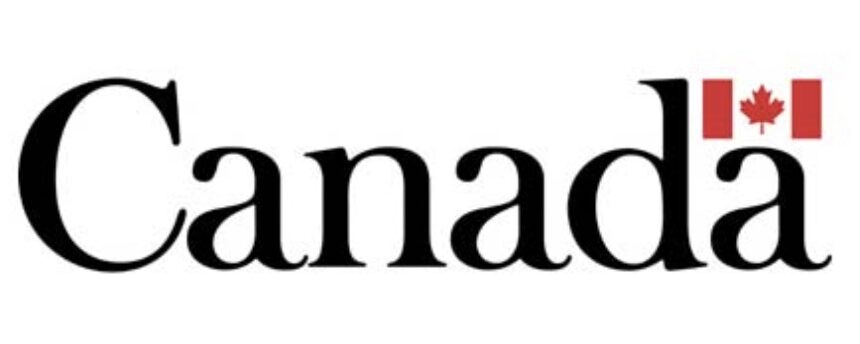How to Get a Canadian Work Permit Without IELTS
Securing a Canadian work permit without IELTS can be a challenging yet rewarding endeavor. This comprehensive guide will walk you through the process, providing detailed insights and strategies to help you navigate the complexities of Canadian immigration. By the end of this article, you’ll have a clear understanding of the steps involved, alternative language proficiency options, and tips to enhance your application.
Find your Eligibility for FREE!!
Understanding the Canadian Work Permit
A Canadian work permit is a legal document that allows foreign nationals to work in Canada for a specified period. It is issued by Immigration, Refugees and Citizenship Canada (IRCC) and is typically tied to a specific job offer from a Canadian employer. However, obtaining a work permit without IELTS (International English Language Testing System) scores is possible through alternative pathways.
Why IELTS is Not Always Necessary
While IELTS is a widely accepted English proficiency test, it is not the only option. Many Canadian employers and immigration programs recognize other language tests or even waive the language requirement under certain conditions. Understanding these alternatives can broaden your opportunities to work in Canada.
Alternative Language Proficiency Tests for Canadian Immigration
When pursuing a Canadian work permit, demonstrating English language proficiency is often a crucial requirement. While the International English Language Testing System (IELTS) is widely recognized, it is not the only option available. Several alternative language proficiency tests can help you meet the requirements for Canadian immigration, each with its own advantages and acceptance criteria. Exploring these alternatives can broaden your opportunities and enhance your application.
TOEFL (Test of English as a Foreign Language)
The TOEFL, administered by the Educational Testing Service (ETS), is a widely accepted alternative to IELTS. It assesses your English proficiency across four key areas: reading, listening, speaking, and writing. Many Canadian institutions and employers recognize TOEFL scores, making it a viable option for those seeking to work or study in Canada.
- Acceptance: TOEFL is accepted by numerous Canadian universities, colleges, and employers, providing flexibility for applicants.
- Format: The test is available in both internet-based (iBT) and paper-based (PBT) formats, catering to different preferences and accessibilities.
- Scoring: Scores range from 0 to 120, with each section scored out of 30. Understanding the scoring system can help you set realistic goals and prepare effectively.
PTE (Pearson Test of English)
The Pearson Test of English (PTE) is a computer-based test that is gaining popularity among Canadian organizations. It evaluates your English skills through a series of tasks that mimic real-life scenarios, providing a comprehensive assessment of your language abilities.
- Acceptance: PTE is accepted by various Canadian educational institutions and immigration programs, offering a modern alternative to traditional language tests.
- Format: The test is entirely computer-based, offering a convenient and efficient testing experience. Results are typically available within five business days, allowing for quicker application processing.
- Scoring: Scores range from 10 to 90, with each section (speaking, writing, reading, and listening) contributing to the overall score. Understanding the scoring criteria can help you focus your preparation efforts.
CAEL (Canadian Academic English Language)
The Canadian Academic English Language (CAEL) test is specifically designed for Canadian academic and professional settings. It provides a tailored assessment of your English language skills, making it a relevant and recognized alternative to IELTS.
- Acceptance: CAEL is accepted by many Canadian universities, colleges, and professional organizations, ensuring its relevance for applicants seeking to study or work in Canada.
- Format: The test is available in both computer-based and paper-based formats, offering flexibility for test-takers. It focuses on academic English, making it particularly suitable for those pursuing higher education or professional roles in Canada.
- Scoring: Scores range from 10 to 90, with separate scores for reading, listening, writing, and speaking. Understanding the scoring system can help you prepare effectively and achieve the required scores for your application.
Incorporating Language Proficiency into Your Application
When applying for a Canadian work permit, it’s essential to highlight your language proficiency effectively. Tailor your resume and cover letter to emphasize your English language skills and any relevant certifications. Networking with potential employers and seeking professional development opportunities can further enhance your application.
For those considering alternative pathways to Canadian immigration, exploring visa sponsorship jobs can be beneficial. Resources like Application for a United Arab Emirates visa, 2024/2025 provide insights into visa sponsorship opportunities and application processes.
Additionally, understanding the Canadian job market and available opportunities can enhance your chances of securing a work permit. Roles such as Farm Worker Jobs in Canada for Foreigners with Work Visa Sponsorship offer unique pathways to Canadian immigration, with some positions providing visa sponsorship.
Exemptions from Language Tests for Canadian Immigration
When applying for a Canadian work permit or immigration, demonstrating proficiency in English is often a key requirement. However, there are certain scenarios where you may be exempt from providing language test scores. These exemptions can simplify your application process and broaden your opportunities to work or study in Canada. Understanding these exemptions can help you determine if you qualify and how to leverage them in your application.
Native English Speakers
If you are a native English speaker from a country where English is the primary language, you may be exempt from providing language test scores. This exemption is based on the recognition that individuals from English-speaking countries have a inherent proficiency in the language.
- Eligible Countries: Countries typically recognized for this exemption include the United Kingdom, the United States, Australia, and New Zealand, among others. If you are from one of these countries, you may not need to submit language test scores with your application.
- Documentation: While you may be exempt from testing, you might still need to provide documentation proving your citizenship or residency in an English-speaking country. Ensure that your application includes all necessary documents to support your exemption claim.
Previous Education in English
Completing a degree program in English can also exempt you from language tests. This exemption acknowledges that academic achievement in an English-language program demonstrates a sufficient level of language proficiency.
- Eligible Programs: Degree programs at the bachelor’s, master’s, or doctoral level, conducted entirely in English, typically qualify for this exemption. Ensure that your academic transcripts and degree certificates clearly indicate that the medium of instruction was English.
- Institutional Recognition: The educational institution where you completed your degree should be recognized by Canadian authorities. This ensures that your academic credentials are valid and meet the required standards.
Work Experience in English
Extensive work experience in an English-speaking environment can sometimes waive the need for language test scores. This exemption is based on the practical application of English in a professional setting, demonstrating your ability to communicate effectively in the language.
- Duration and Nature of Work: To qualify for this exemption, your work experience should be substantial and recent. Typically, several years of full-time work experience in an English-speaking environment are required. The nature of your work should also involve significant use of English, such as in communication, documentation, or client interactions.
- Documentation: Provide detailed documentation of your work experience, including job descriptions, employment letters, and performance evaluations that highlight your use of English in the workplace.
Leveraging Exemptions in Your Application
If you qualify for any of these exemptions, it’s crucial to highlight them effectively in your application. Tailor your resume and cover letter to emphasize your English language skills and provide all necessary documentation to support your exemption claim.
For those considering alternative pathways to Canadian immigration, exploring visa sponsorship jobs can be beneficial. Resources like Hotels Offering Jobs in Canada with Free Visa Sponsorship provide insights into visa sponsorship opportunities and application processes.
Additionally, understanding the Canadian job market and available opportunities can enhance your chances of securing a work permit. Roles such as Truck Driver Jobs in Canada with Free Visa Sponsorship offer unique pathways to Canadian immigration, with some positions providing visa sponsorship.
Pathways to Obtain a Canadian Work Permit Without IELTS
1. Employer-Specific Work Permit
One of the most straightforward ways to obtain a work permit is through an employer-specific work permit. This type of permit is tied to a specific job offer from a Canadian employer. The employer must obtain a Labour Market Impact Assessment (LMIA) from Employment and Social Development Canada (ESDC), which confirms that hiring a foreign worker will not negatively impact the Canadian labor market.
2. Intra-Company Transfer
If you are currently employed by a multinational company with a branch in Canada, you may qualify for an intra-company transfer. This program allows employees to transfer to the Canadian branch without the need for an LMIA. Language proficiency requirements may be waived or reduced depending on the company’s policies.
3. CUSMA (formerly NAFTA) Work Permit
The Canada-United States-Mexico Agreement (CUSMA) allows citizens of the U.S. and Mexico to work in Canada without an LMIA. Certain professions are eligible for this work permit, and language requirements may be less stringent.
4. Provincial Nominee Programs (PNPs)
Each Canadian province and territory has its own Provincial Nominee Program (PNP), which allows them to nominate individuals for immigration based on their specific labor market needs. Some PNPs have more flexible language requirements or accept alternative language tests.
5. Global Talent Stream
The Global Talent Stream is a fast-track immigration program for highly skilled workers in specific occupations. Employers can hire foreign workers without an LMIA, and language requirements may be waived or reduced.
Enhancing Your Application for a Canadian Work Permit Without IELTS
Securing a Canadian work permit without IELTS can be a competitive process, but with the right strategies, you can significantly enhance your application. By focusing on key areas such as tailoring your resume, networking, professional development, and seeking expert advice, you can increase your chances of success. Here’s a comprehensive guide to help you strengthen your application and stand out to potential employers.
1. Tailor Your Resume and Cover Letter
Your resume and cover letter are your first points of contact with potential employers, making it crucial to tailor them effectively. Highlight your relevant work experience, skills, and any language proficiency certificates you hold. Customizing your application to the specific job and employer demonstrates your suitability for the role and your enthusiasm for the opportunity.
- Relevant Experience: Emphasize your past roles and responsibilities that align with the job you’re applying for. Use quantifiable achievements to showcase your impact and success in previous positions.
- Skills: Highlight both technical and soft skills that are relevant to the job. Include any certifications or training that demonstrate your expertise.
- Language Proficiency: If you have certificates from alternative language tests like TOEFL, PTE, or CAEL, include them in your application. This can strengthen your profile and show your commitment to meeting language requirements.
2. Networking
Building professional connections in Canada can open doors to job opportunities that may not require IELTS. Networking platforms like LinkedIn are invaluable for connecting with industry professionals, recruiters, and potential employers.
- LinkedIn Profile: Ensure your LinkedIn profile is up-to-date and professional. Include a clear headshot, a compelling headline, and a detailed summary of your experience and skills.
- Engage with Professionals: Join industry-specific groups on LinkedIn and participate in discussions. Connect with professionals in your desired field and engage with their content to build relationships.
- Attend Virtual Events: Participate in webinars, workshops, and virtual networking events to expand your professional network and learn about job opportunities.
3. Professional Development
Continuous learning and skill development are essential for remaining competitive in the job market. Updating your skills and certifications can demonstrate your commitment and adaptability to potential employers.
- Online Courses: Enroll in online courses relevant to your industry. Platforms like Coursera, Udemy, and LinkedIn Learning offer a wide range of courses that can enhance your skills and knowledge.
- Certifications: Pursue certifications that are recognized in your field. This can include technical certifications, project management certifications, or industry-specific qualifications.
- Volunteer Work: Engaging in volunteer work related to your field can provide valuable experience and demonstrate your commitment to your profession.
4. Seek Professional Help
Navigating the Canadian immigration process can be complex, and seeking professional help can provide personalized advice and guidance tailored to your circumstances. Consider hiring an immigration consultant or lawyer who can assist you with your application and increase your chances of success.
- Immigration Consultants: These professionals can provide expert advice on the application process, help you gather the necessary documents, and ensure your application is complete and accurate.
- Legal Assistance: An immigration lawyer can offer legal advice and representation, helping you navigate any challenges that may arise during the application process.
Exploring Job Opportunities in Canada
Canada offers a diverse range of job opportunities for foreign workers. Some sectors with high demand include healthcare, technology, and skilled trades. Additionally, there are unique opportunities in pet care and dog training, which can be explored through resources like Pet Care Jobs in Canada.
For those interested in other types of work, consider roles such as Warehouse Worker Jobs. These positions often come with visa sponsorship, making them attractive options for foreign workers.
Settling in Canada
Once you secure a work permit, the next step is to plan your move to Canada. Finding affordable housing is crucial, and resources like Affordable Temporary Housing Options for Immigrants in Canada can be invaluable.
Conclusion
Obtaining a Canadian work permit without IELTS is achievable through alternative language tests, exemptions, and various immigration programs. By understanding the pathways available and enhancing your application, you can increase your chances of securing a work permit and starting your career in Canada. Whether you’re interested in pet care, technology, or skilled trades, Canada offers a wealth of opportunities for foreign workers.
For further reading and to explore job opportunities, visit Best Websites to Find Job Openings in Canada for Foreign Workers. These resources can provide additional insights and help you navigate the Canadian job market successfully.







